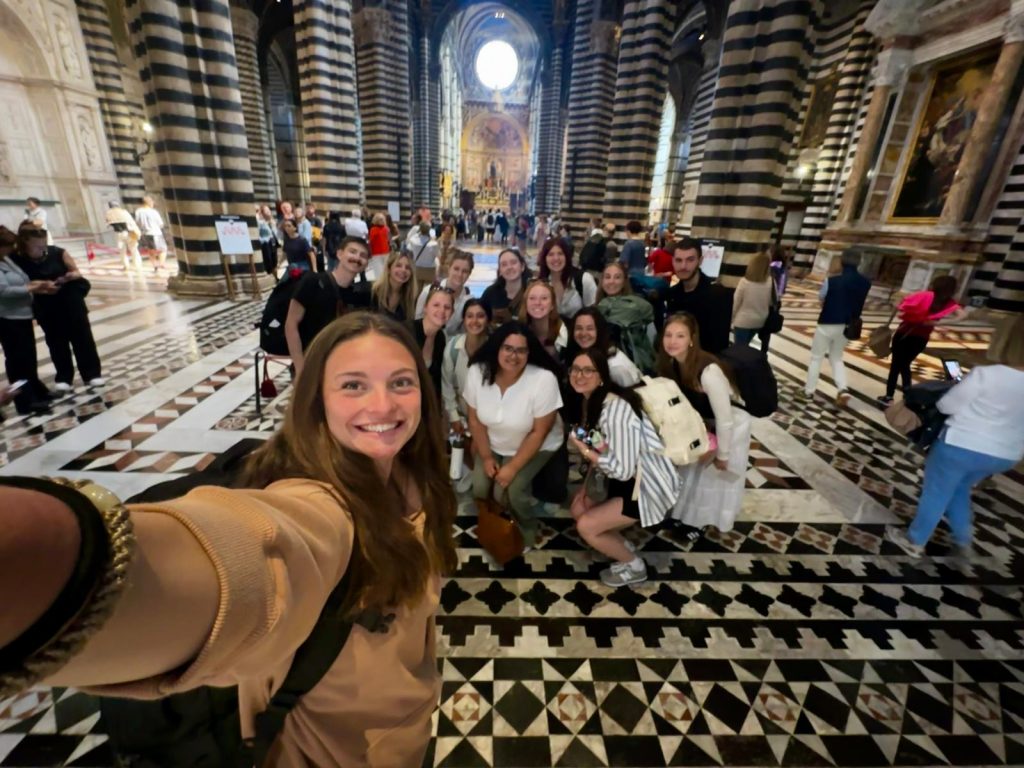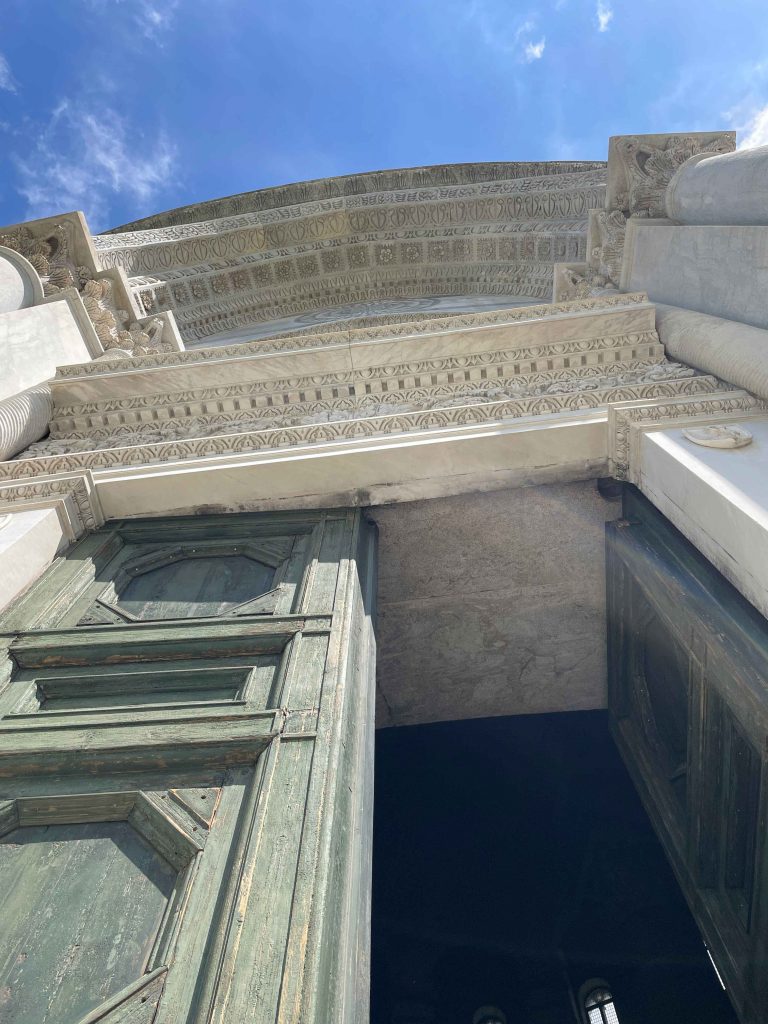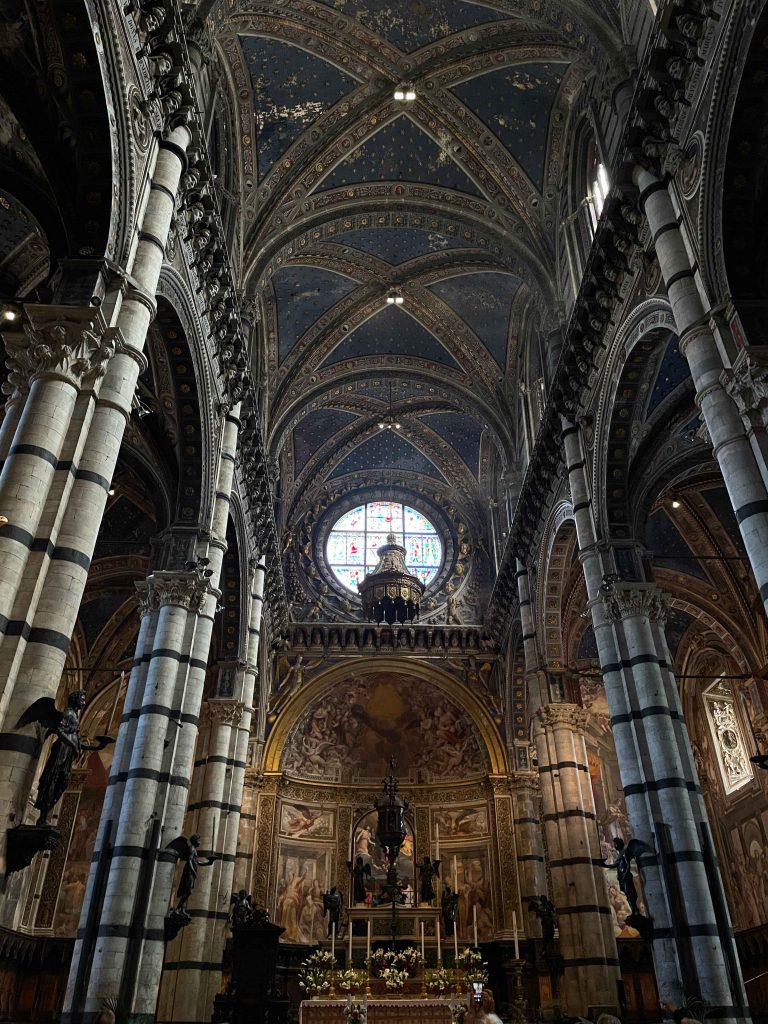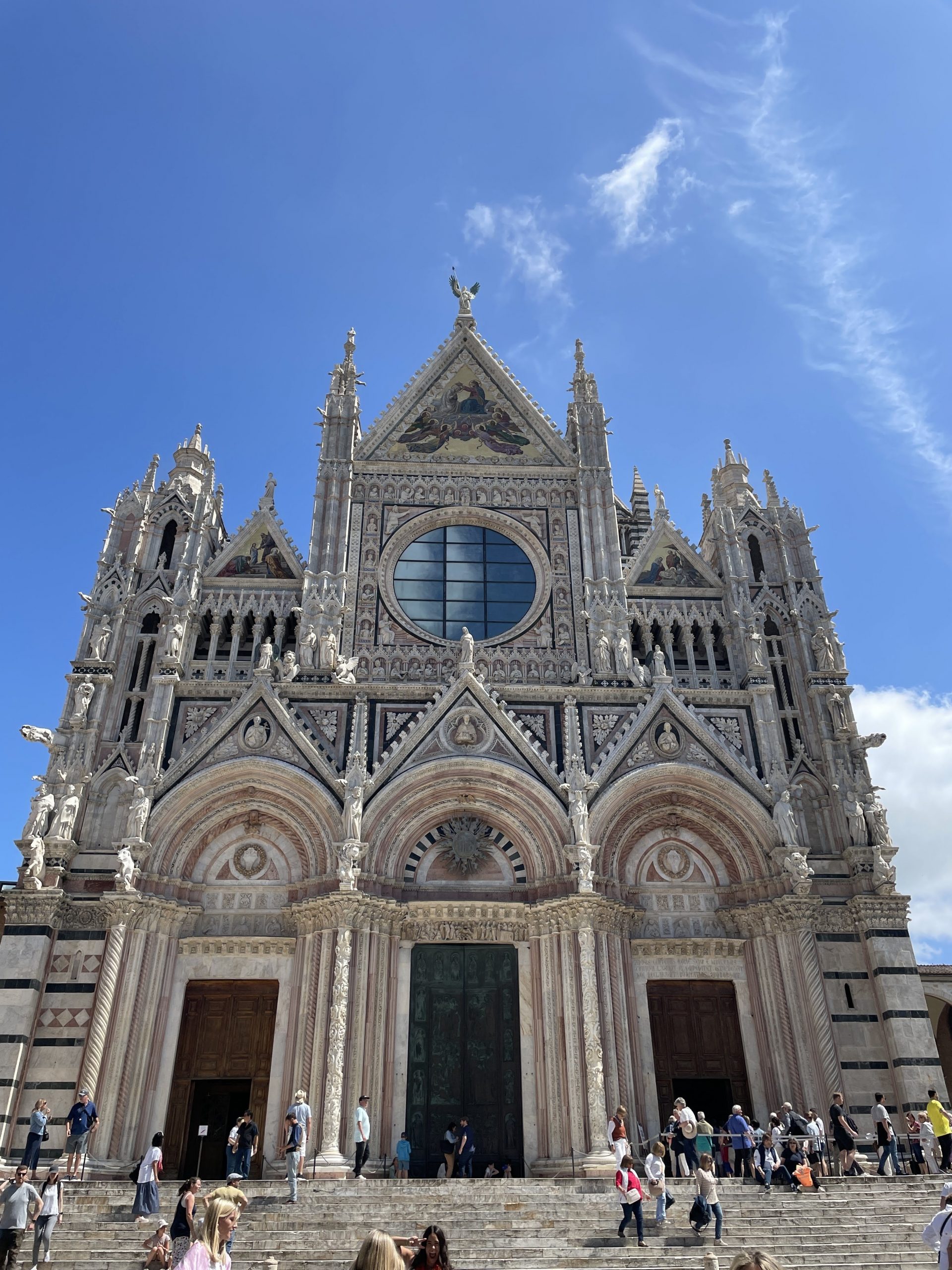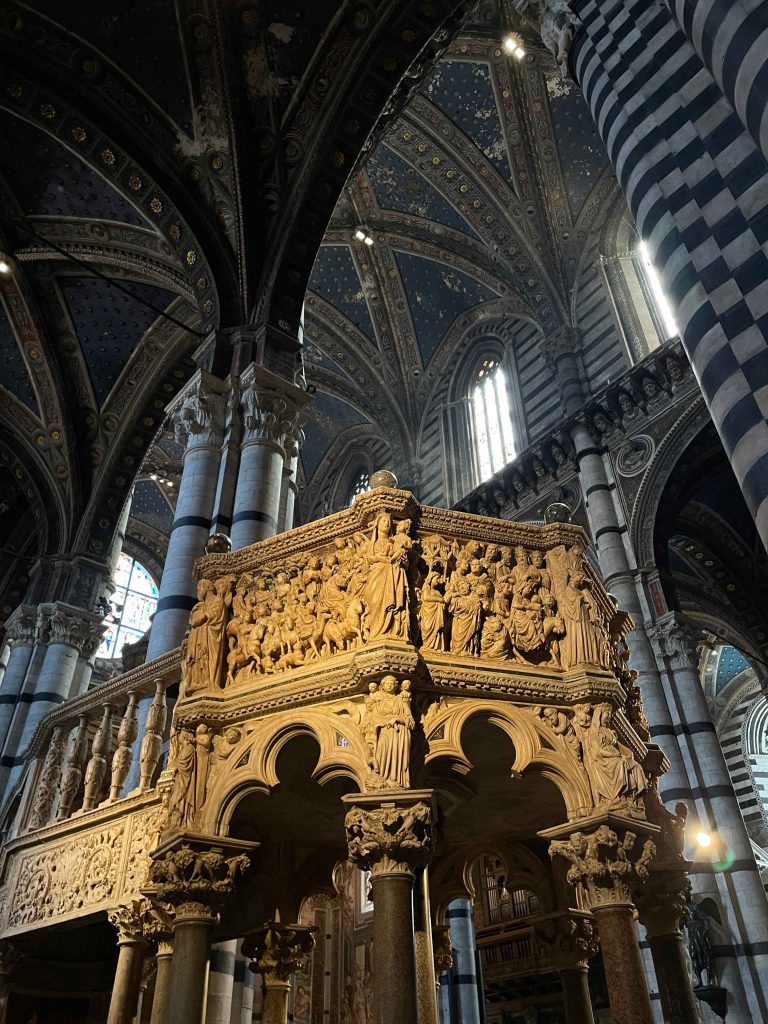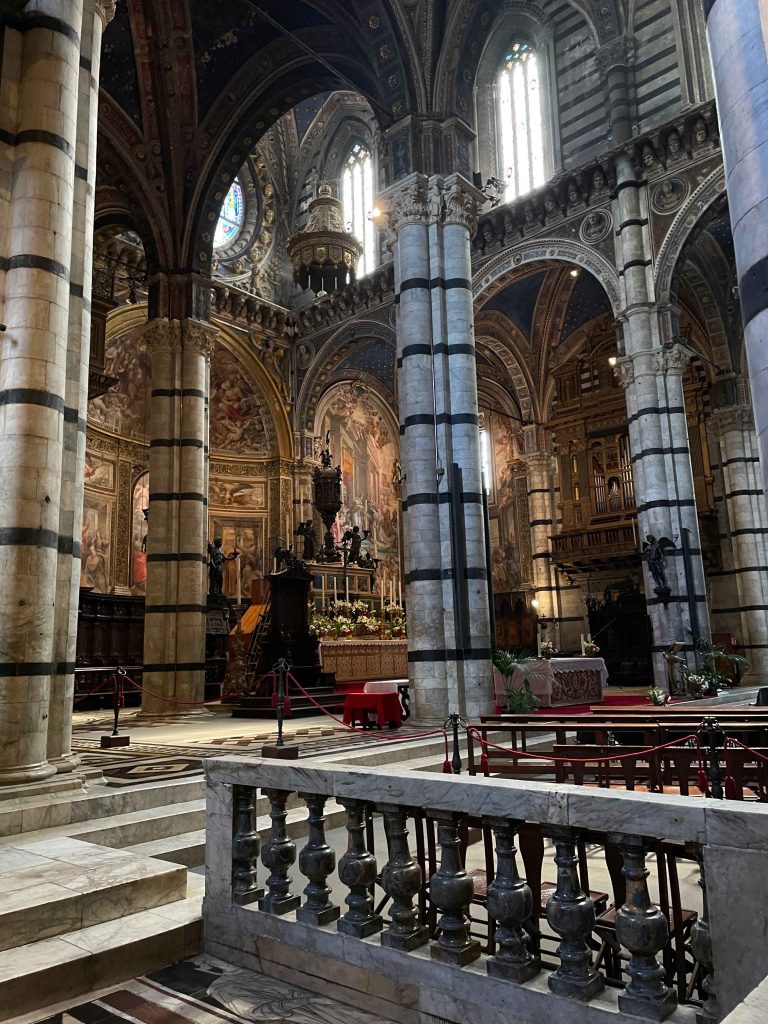Trip to Siena
The second pre-planned trip for the Volterra-Detroit students was to Siena. A medieval city in Tuscany that is known for its famous Palio run in its central piazza Il Campo. The Palio run is a horse race around the piazza that happens twice every summer. The trip to Siena was led by the students, who each chose a historical monument and did their own research before traveling. The most notable monuments included the Cathedral of Siena, the Piazza del Campo, Loggia della Mercanzia, and Bank Monte dei Paschi di Siena.
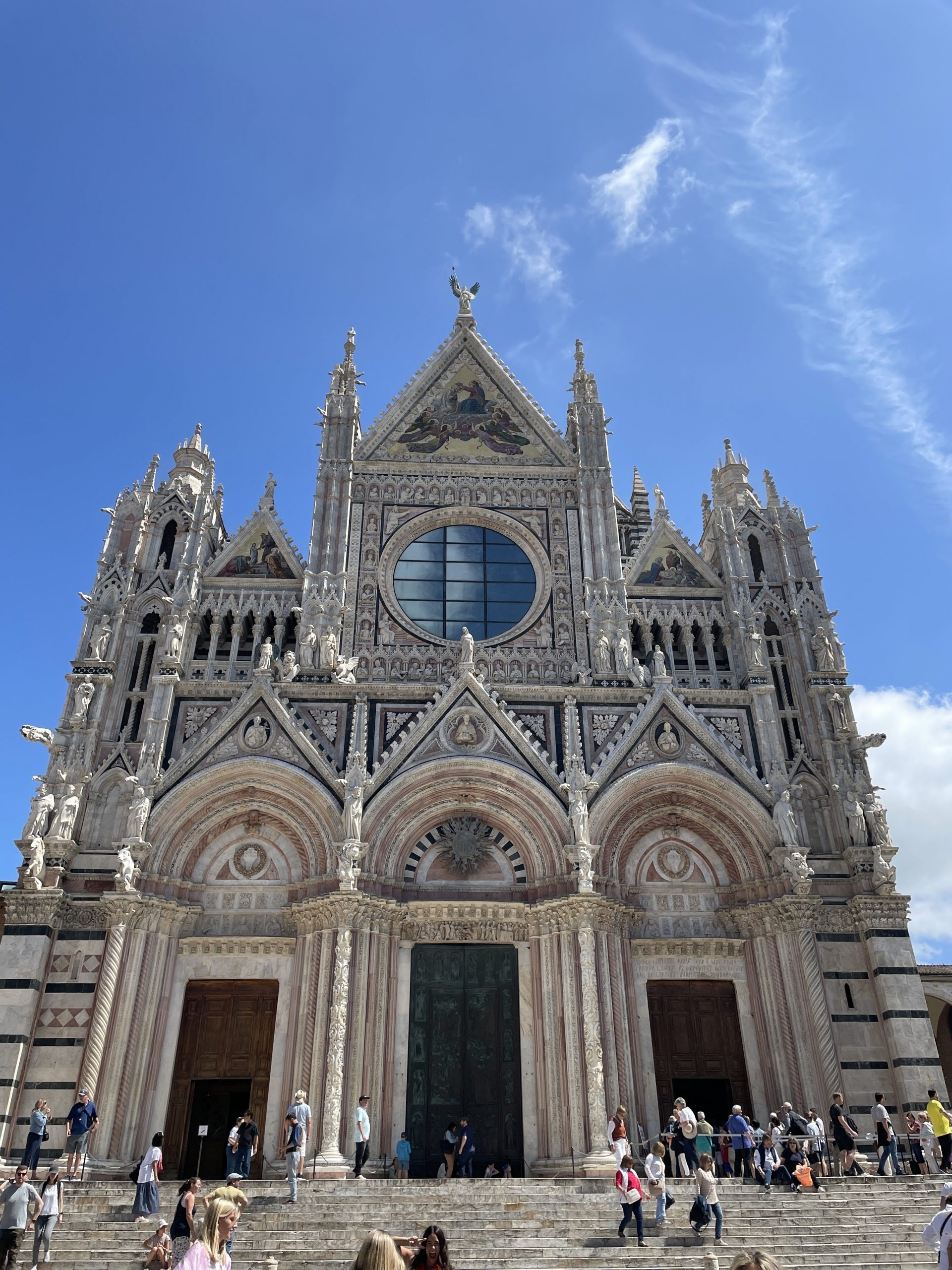
When they first arrived in Siena, the first stop through the city was the Bank Monte dei Paschi di Siena. This bank, built in 1472 is the oldest bank in the world. It is a mixture of Gothic and Renaissance styles and has a statue of Sallustio Bandini in front of it. Sallustio Bandini was a politician and advocate for free trade. The bank is still functioning today.
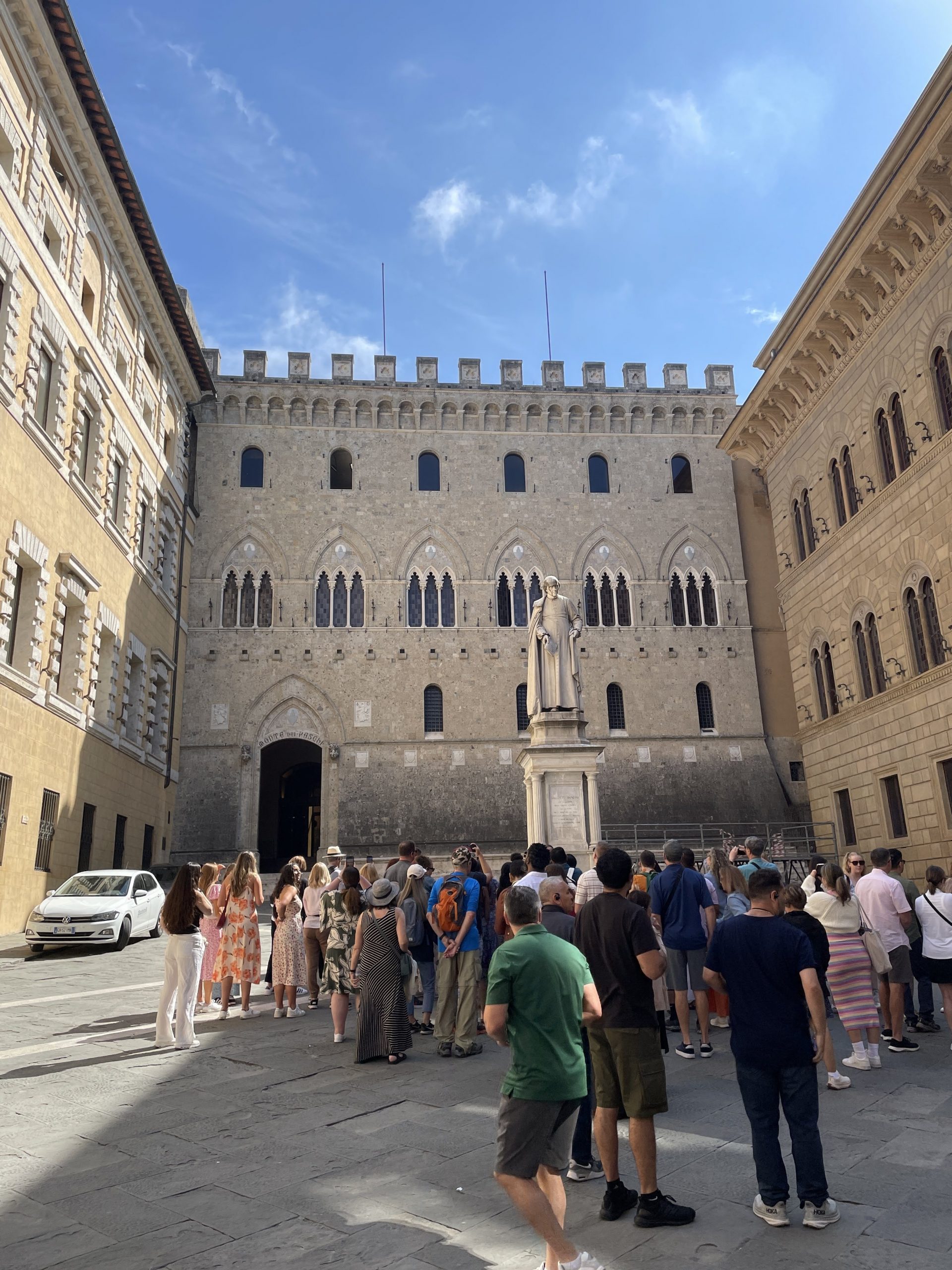
The Loggia della Mercanzia was second on the tour. In the center of Siena’s most important intersecting streets is the merchant’s headquarters from the 15th century. The Loggia della Mercanzia is a good example of transitional architecture from Gothic to Renaissance. Students spent their time trying to identity the different elements from both periods. The pointed arches are the most prominent Gothic feature and supported by slender columns decorated with floral patterns. The symmetry and proportionality of the building reflects the Renaissance period. The sculptures that line the building are representative of Renaissance because of their display of humanism and anatomical accuracy.
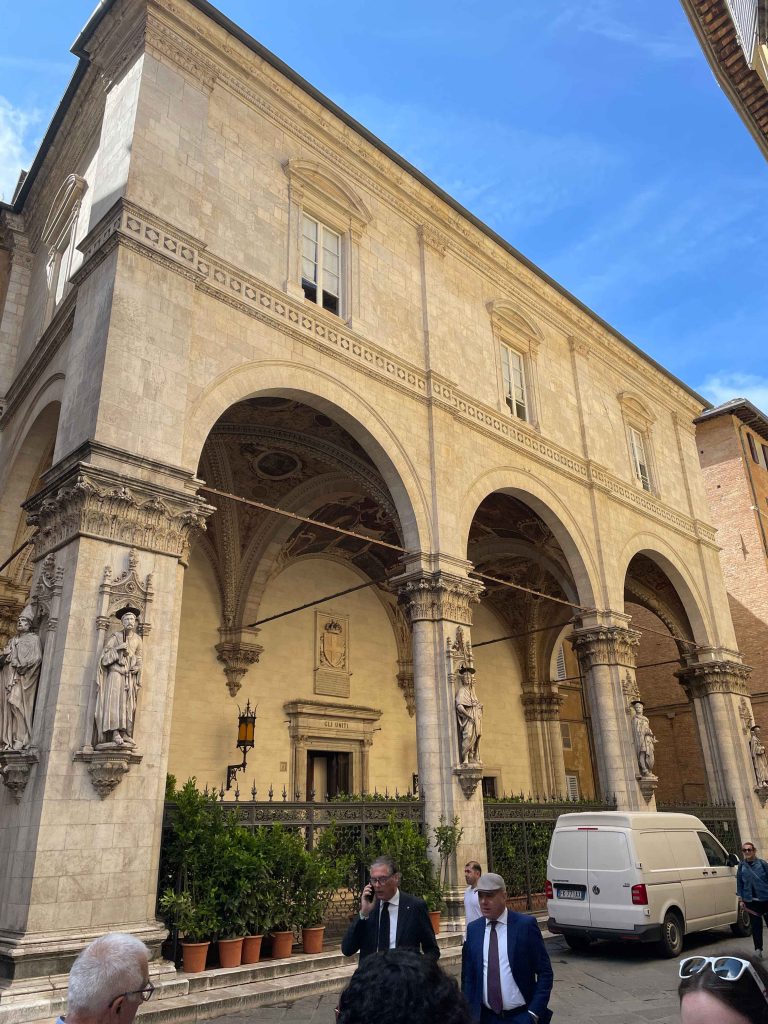
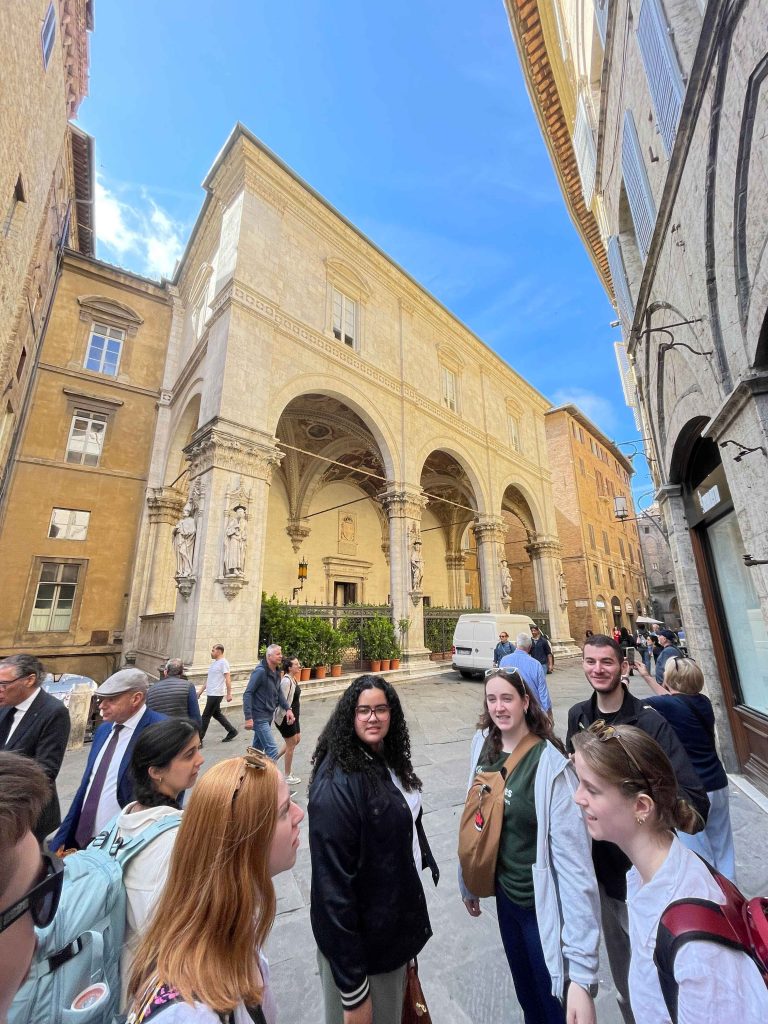
After the Loggia della Mercanzia, the students made their way to the Piazza del Campo. The Paizza del Campois renowned for its unique shell-shaped design and its importance as a social, cultural, and political hub in the city. The piazza features the Fonte Gaia, a beautiful and historic fountain originally sculpted by Jacopo della Quercia and other statues around the piazza. The horse races at Piazza del Campo, known as the Palio di Siena is held twice a year, on July 2nd and August 16th. The race dates back to the 14th century, evolving from earlier military training exercises and celebrations. It has been run in its current form since the mid-1600s.
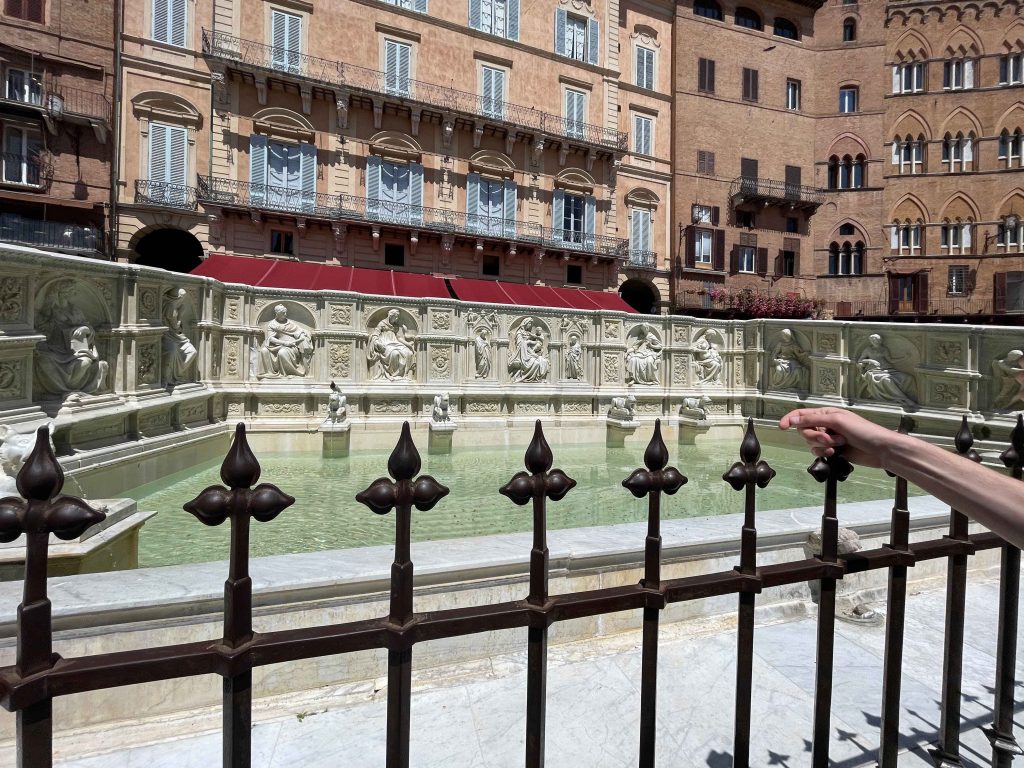
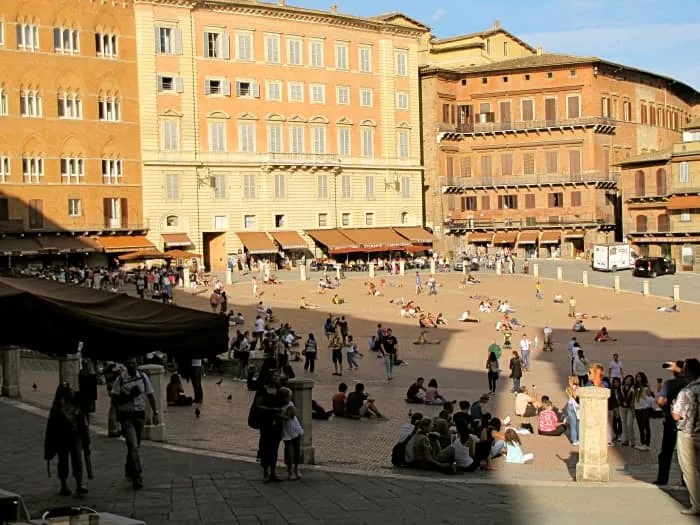
The last stop on the tour of Siena was the grand cathedral in its city center. The cathedral is a highly decorated building from the Romanesque-Gothic period. The exterior features beautiful sculptures and mosaics with a large rose window. Its bell tower is stripped with black and white marble that compliments the exterior. Inside, the naves were lined with similar black and white marble columns. The floor has one of the most intricate mosaic patterns that consists of 56 panels. The Piccolomini Library inside the cathedral includes famous frescoes by Raphael. The students spent time in the cathedral admiring the frescoes and mosaics while analyzing the architectural style that makes the cathedral so infamous.
